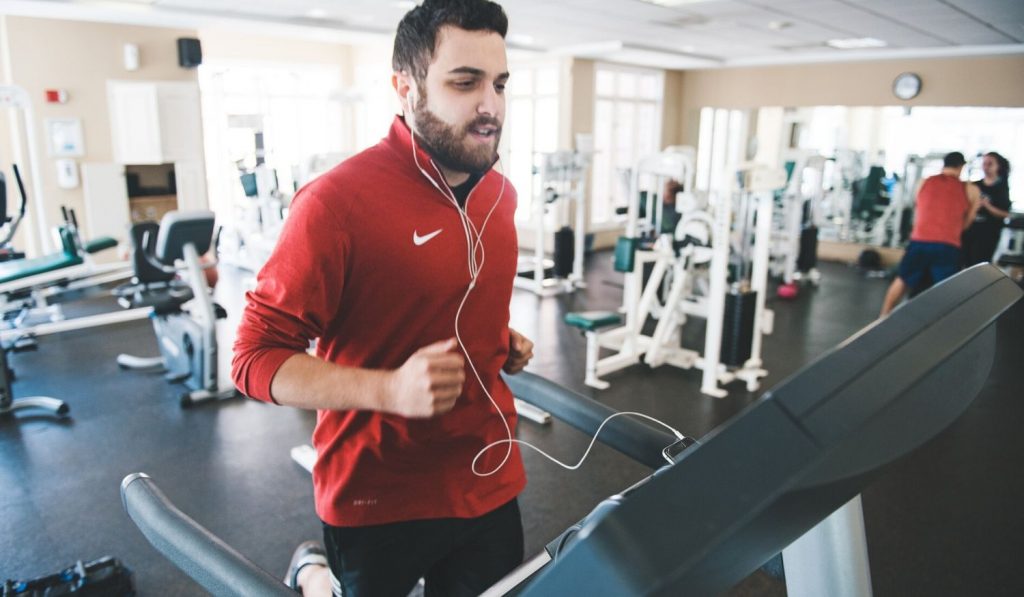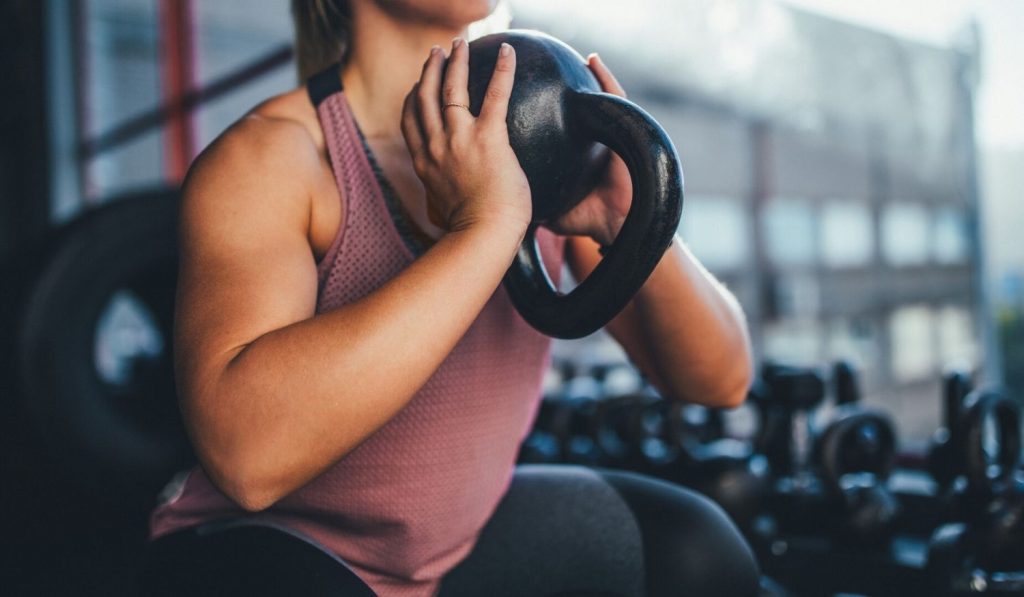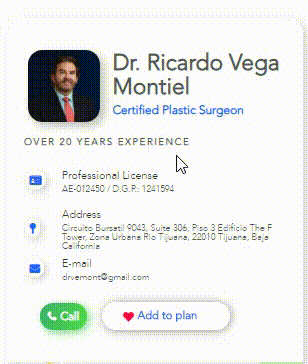Comitiva de Promoción del Sector Salud en Las Vegas, NV USA
El Baja Health Cluster formo parte de la Comitiva de Promoción del Sector Salud que visito Las Vegas, acompañando al...

Much of the health care establishment operates under the assumption that the cure for physical inactivity is more physical activity. Yet, when you take a closer look at the effect inactivity is having on our physiology, the solution is not as simple as just moving more. The solution starts with rethinking exercise.
We are less active in today’s world because we are sitting more. However, the real problem is that we are sitting and stressed, not sitting and relaxed.
When we are stressed, our bodies are programmed to be ready to move, to fight or flee the threat. Blood glucose, blood lipids, and blood pressure increase. Inflammation in the whole body rises.
It’s the combination of being stressed and sitting still that is draining our health because our bodies are not able to get back to the ‘heal and repair’ mode of what Dr. Herbert Benson described as the relaxation response.
I believe that movement that is not stress-producing is the antidote to sitting and being stressed.
Most of us don’t, however, choose to move more in response to stress. We are more likely to choose the socially acceptable ways to de-stress such as comfort food, social media, alcohol, and drugs.
These are more readily available than movement and more guaranteed to make us feel better instantly. The catch is they only distract from the stress. We don’t end up in the heal and repair mode that can come from stress-free movement. Rather, we only end up with a mind distracted and a body that is more inflamed.
Often, we try to solve the problem of being still and stressed by doing stress-producing, not stress-reducing, activities. Step goals are a case in point: we multitask while walking, join competitions, and create challenges to make us get more steps.
These are not likely to put the body in heal and repair mode—quite the opposite. Given that the World Health Organization has now made burnout an official medical condition, do we really need to create more people feeling pressure to accomplish more in a day?
When we use terms like ‘sitting disease’ as a motivator to mend our sedentary ways, it certainly gets our attention. Fear is a great motivator, in the short term anyway.
In the long-term, though, we sacrifice the desire to improve public health for the short-lived, pseudo-solution of simply moving more. We have created a society that feels good when they meet their step goal, but more stressed if they don’t.
Fear-based motivation to move, and guilt when we don’t move, can compound the stress of this sedentary lifestyle problem.
The problem is not so much a lack of movement. It is the loss of strength, stamina, and mobility that comes from not moving the body in the specific ways that will help it maintain these qualities. Simply stated, inactivity results in deconditioning. It is one result of living in our sedentary society in a body that gets used to what little we give it.
Deconditioning is an under-recognized side effect of a sedentary lifestyle. This is a big deal because it contributes to a lot of medical conditions, such as arthritis, osteoporosis, depression, anxiety, and pain. Unfortunately, we often end up simply medicating these conditions instead of addressing the role that physical activity could play in ameliorating symptoms. For example, it is known that physical activity can delay the onset of disability related to arthritis. And, exercise can not only alleviate symptoms of depression, but it may also prevent it from occurring in the first place.
A body that is deconditioned is less comfortable to be in both when still and when moving. It feels stiff, weak, and tired. It does not sleep as well, digest as well, or heal as well.
When we heed the message to move more, our deconditioned bodies feel more uncomfortable. We are embarrassed by the state of our body and that adds to the stress of trying to be healthy. This makes us less likely to move and more likely to lose strength, stamina, and mobility. The downward spiral of deconditioning has begun.
In a body that is deconditioned, it’s easy to do too much too soon when we try to get moving again. Doing too much may stress us out and raise, rather than lower, inflammation, further compounding the strain on our bodies.
All too often, the word exercise is equated with sweat and soreness. Further, success is measured by athletic performance, calories burned, miles moved, or weight lifted. We have made the antidote to stress another contributor to stress.
When we need fitness challenges, tough trainers, insane fitness classes, and weight loss competitions to make us exercise so we ‘see results’, it is a sure sign we have strayed far from the true definition of exercise.
As a result, too many ‘exercisers’ are people who can keep up with this cultural definition. The others are left to wait until they lose weight or succumb to the idea that they ‘can’t exercise’.
Most people are unaware of the fact that the field of fitness is largely unregulated. Anyone can call themselves a fitness expert or trainer. This leaves us surrounded with exercise advice that is based more on personal experience than scientific facts.
Imagine if other professionals in the business of helping the body could do this. It would be complete mayhem! Yet that is the state of the fitness industry and the fitness consumer is paying the price, with their wallet and their body.
The word ‘exercise’ is defined in the dictionary as ‘something practiced to improve a skill or ability’. Physical exercise can be defined as ‘movements practiced to improve a skill or ability’. Exercise is a type of physical activity, but not all physical activity is exercise.
We don’t just need to move more, we need to move in a specific way that will re-condition our bodies and reduce our stress all at the same time. Yet, the association with the word exercise is still powerfully off-putting for many people. Helping then rethink exercise can be the start of the solution.
The word practice is key here. We know what is involved in quality practice for something like a musical instrument. You practice the specific instrument you want to learn, not a different instrument. You practice regularly, not sporadically. When you practice, you do not multitask because it takes full, focused attention to improve the skill or ability. The level of your practice is just challenging enough so you improve, and you progress only when your skills improve enough to move to the next level. If you stop practicing, you are not surprised that your skills fade. When you start practicing again, your skills return. This process of practice is not questioned in any other area of life, except when it comes to exercise.
The concept of good practice is missing in culturally-defined exercise. We do exercises because they ‘worked’ for someone else. Exercises are largely designed for ‘sculpting’ or ‘targeting’ areas rather than practicing movements for daily life.
We are drawn to ways to make faster progress. We tell ourselves pain is a sign of progress. We believe that when we lose weight we will function better, so we suffer through grueling workouts to burn more calories and melt more fat.

In order to get through this discomfort, we use all kinds of strategies to distract us. We hire someone or join a competition to push us so we can stick with it until we see results. We are focused on getting to some future state where we will live ‘happily ever after’ and life will be easier. We skip over what science says about exercising to make life easier now.
Considering the pace of our modern life, with stress as a major drain on our health, a more updated definition of exercise could be:
‘movement to reduce the stress and strains of daily life so you feel and function better, now and in the future’.
The distinction is essential because exercise, not physical activity helps with each fo the following:
Exercise is an opportunity to take a time-out, away from stress and truly restore wellbeing.
Hidden in the pages of every exercise physiology and biomechanics textbook are the answers to how to exercise and become re-conditioned for improving health and function in daily life, no matter what the state of your body.
When the principles of exercise training are followed, exercise reverses the spiral of deconditioning. Like other scientific principles, when you follow them, you get results that last.
Interestingly, these principles align perfectly with what we know about good practice. Therefore, we don’t need to learn anything new. We just need to rethink exercise so we can apply science to how we approach exercise.
The principles of exercise training can be summed up in one sentence:
Your body gets used to what you give it.
1.SPECIFIC
The general guidelines that recommend getting ten thousand steps per day or 150 minutes of physical activity per week do not adequately take care of deconditioning. Getting more steps, or doing more of the same limited movements you do in daily life, will not help your body regain the strength, stamina, and mobility lost from physical inactivity. To gain the specific skills and abilities your body needs, you need to move it in those specific ways. Just like practicing the musical instrument you want to play better, you need to move your body in the ways that will improve the specific ability you want to regain.
2. GRADUAL
If you give a plant too much water, it does not grow faster. It withers. Like a plant, your body has a natural growth rate. When you give your body just the right amount of exercise each time, it cannot help but grow stronger. It’s the same process as everything in nature: change takes time and there are no shortcuts. Just like practicing a musical instrument, gradual progression of the level of challenge is the way to keep your body learning, without it being overwhelming or boring. Like a plant, the only way to know is by paying attention to your own body. This brings us to the next principle.
3. UNIQUE
Your body responds differently from other people’s and responds differently day-to-day. The idea that there is one flat rate of movement in general, or that someone else can tell you how much is enough, is limiting. Relying on someone else to tell you how much is enough reduces your ability to listen to and trust your own body. You are more likely to ignore signs and symptoms of doing too much, too little, or the wrong kind of movement for your own body. Just as everyone learns a musical instrument at a different pace and capacity, your body adapts to exercise in a different way than the people around you. The only way to practice movements is to pay attention to your own body in the present moment. When exercise is done with this mindset of listening to your own body, taking care of it, in the present moment, you add the power of mindfulness to exercise. Mindful exercise improves the function of your mind and body!
4. REVERSIBLE
Your body gets used to what you give it in both directions. Regular, specific, just-right-level practice leads to maintaining skills and ability. When you stop, stamina, strength, and mobility fade. When you start again, they return. This is true for exercise at every age and bodies of any size.
The biggest problem is that when the first three principles are ignored, exercise doesn’t feel good. You may not stick with it and, then, the results won’t be as good not will they be lasting.
Habits are sometimes explained by neuroscientists in this simple way: the brain is hardwired to repeat what feels good and avoid what feels bad. You can override this with willpower for a while, but in the end, lasting habits are formed when something makes us feel good right away. This explains why comfort food, social media, and alcohol are the go-to ways to reduce stress. They make us feel good quickly so that we keep coming back for more.
Unfortunately, moving more does not necessarily make us feel good right away. It does not reduce stress or re-condition instantly. Rather, these benefits accrue over time.
I believe if we can rethink exercise in this way, people live longer. They would also be healthier, happier, more satisfied with life, less stressed and inflamed.
We would be treating the root problem of inactivity rather than using a pseudo-solution like setting step goals. We would be living well in this modern life because we would exercise as a personal resource for reducing stress and functioning well, all at the same time.
This means shifting away from movement that is painful, over-challenging, complicated, time-consuming and often dreaded toward getting the right amount and type of movement. This should be calibrated to reduce the stress of daily life so you feel better now. Over time, as deconditioning lessens, it will reduce strain because you now have enough stamina, strength, and mobility to do what you need and want to do in life.
The goal is for each person knows how their own body is designed to move well. The exercise information they would access is based on the science of exercise for health and well-being. It is not built on the need to sell products or drastically improve athletic performance. Each person would understand how to keep their body conditioned at any age, any size, and any level of fitness.
Each person will have the skill of listening to their own body, trusting it as the best guide for moving well and improving function.
When exercise is considered a break, rather than a task, to rid the body of stress while re-building the skills needed to move with more ease, exercise will truly be the medicine for our modern world.
Sources
Brewer, J. (2017). The Craving Mind; From Cigarettes to Smartphones to Love – Why We Get Hooked and How We Can Break Bad Habits (1st Edition). Yale University Press
Ding, D, Lawson, KD, Kolbe-Alexander, TL, Finkelstein, EA, Katzmarzyk, PT, van Mechelen, W. The economic burden of physical inactivity: a global analysis of major non-communicable diseases. The Lancet. Vol. 388, Issue 10051, p1311-1324, Sept. 24, 2016 https://doi.org/10.1016/S0140-6736(16)30383-X
Mcardle, WD, Katch, FI, Katch VL. Exercise Physiology: Nutrition, Energy, and Human Performance 8th Edition. LWW; 8th edition (March 4, 2014). Lippencott, Williams and Wilkins
Nada Sallam, N and Laher, I , Exercise Modulates Oxidative Stress and Inflammation in Aging and Cardiovascular Diseases. Oxid Med Cell Longev. 2016. 10.1155/2016/7239639


El Baja Health Cluster formo parte de la Comitiva de Promoción del Sector Salud que visito Las Vegas, acompañando al...


Add the items of your interest in your planner, you can delete or add items anytime. The heart at the right corner shows the amount of items in your planner.

Submit your name, email and additional information you need about the providers. Our Concierge will send you all the information you need.
Address: Mision de Santo Tomas 2812, Zona Urbana Rio (4,69 km)
Tijuana
Available from 9:00 am – 19:00 pm